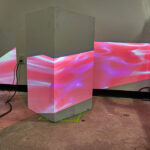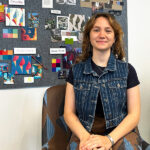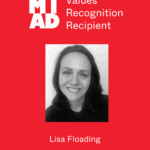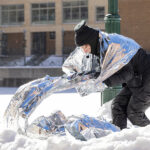Assessing Assessment: The role of evaluation in the foundations program
As studio pedagogy continues to shift from a modernist context, how does, or how should, the evaluation of foundations programs and student performance shift in correspondence? What aspects of the foundations program should be assessed? In the midst of a national preoccupation with standardized teaching, testing and assessment, how is the foundations program impacted? In a broad sense, what are the goals of the many kinds of assessment and what is their relevance to teaching the visual art disciplines? What can be learned from the tools, processes and outcomes of assessment?
Chair: Laura Prange, Assistant Professor of Art
Affiliation: University of Southern Mississippi
Contact: Laura.Prange@usm.edu
Bridge-Building: Art education connections from high school
This panel seeks art educators committed to student success who are willing to expand the conversation beyond the four walls of their own institution to consider the whole picture. How well do current practices help to connect student learning and how might those be enhanced? What other methods might be tried to achieve seamless continuity as the student advances from one level to the next? Presentations are invited that explore a range of actual models and new ideas about how faculty at the two levels have or might work together to strengthen the student’s preparedness and success.
Chair: Barbara Nesin, Associate Professor
Affiliation: Spelman College, Department of Art
Contact: batyat@yahoo.com
Collaboration in Formative Years
Collaboration promotes thinking and ideating in completely new ways and can be an invaluable learning method for students as well as educators. Through a collaborative approach to teaching and learning, we have seen students grow as thinkers and makers. Introducing collaboration as an art making strategy in the formative years broadens a student’s exposure to the possibilities within the arts. This panel brings together presenters who are interested in exploring how others are using this strategy.
Co-Chairs: Jennifer Pollock, Associate Lecturer
Frankie Flood, Associate Lecturer
Affiliation: University of Wisconsin-Milwaukee
Contact: JENP@uwm.edu
fflood@uwm.edu
Cross Cultural Aesthetics
In our practice as art educators we consciously and unconsciously inscribe aesthetic tradition upon the rights of passage that undergrids the secondary art experience and also the college foundation. This panel proposes to look at the power of cross cultural aesthetics. In highlighting the art historical contributions of artists of color, exciting perspectives are brought to light that enliven the discussion of aesthetics relative to artistic production in secondary and foundation programs.
Within educational practice Geneva Gay (2000) discusses the notion of Culturally Responsive Teaching.
Chair: Debra Ambush, Member of the College Board AP Committee of Studio Art
Affiliation: Watkins Mill High School
Contact: Saabsty1@aol.com
Social Software for Learning Communities
Social software enables people to rendezvous, connect or collaborate through computer-mediated communication and to form online communities. In the foundation art studio, there is considerable potential for harnessing new technologies to enable better peer-to-peer interaction (e.g., email, texting, blogs), to facilitate collaborative problem solving (e.g., blogs), to provide an electronic record (e-portfolios in .html or blog formats), and to reach out to communities beyond the immediate art classroom (blogs, wikis, podcasts). This panel would feature the experimentation by foundation teachers currently utilizing one or more of these social software technologies in their art teaching and offer a forum for critical debate regarding their creative uses and abuses.
Chair: Daniel Collins, Professor of Intermedia, Core Coordinator
Affiliation: Arizona State University, School of Art
Contact: dan.collins@asu.edu
The Museum Assignment: Bridging art history research and studio practice
Art history instructors often take or send students to museums and galleries to complete art history writing assignments. This experience can provide beginning art and design students an opportunity, through observation, research and writing, to think about connections between what they are doing in studio classes, and what they observe and learn about art and design created in the past. This session is seeking presenters with experiences or practical assignments that can help students see specific connections between historical art and their own emerging education as visual artists and designers.
Chair: James Slauson, Professor of Art History
Affiliation: Milwaukee Institute of Art & Design
Contact: jslauson@miad.edu
Writing Across the Curriculum: Critical Thinking From the Start
Foundations education requires students, usually for the first time, to connect art making to art theory, criticism and history. Making great art depends on internalizing the language of art. Writing about art is one of the key ways to make this happen. Writing teaches students to see and to discover what they think. Writing is problem solving. Writing in a discipline reflects thinking in that discipline. Writing makes thinking concrete.
How can Foundations instructors use writing across the curriculum to enhance all that needs to be learned in that critical first year?
Co-Chairs: Lee Ann Garrison, Associate Professor, Director of Foundations
Leslie Fedorchuck, Professor of Liberal Studies
Affiliations: University of Wisconsin-Milwaukee, Department of Visual Art
Milwaukee Institute of Art & Design
Contact: garrla@uwm.edu
lfedorch@miad.edu





